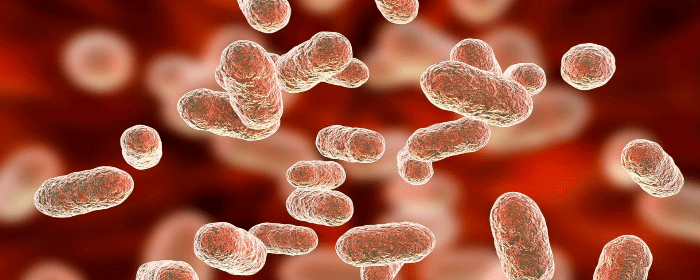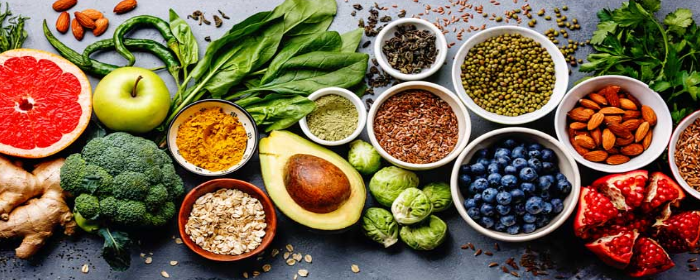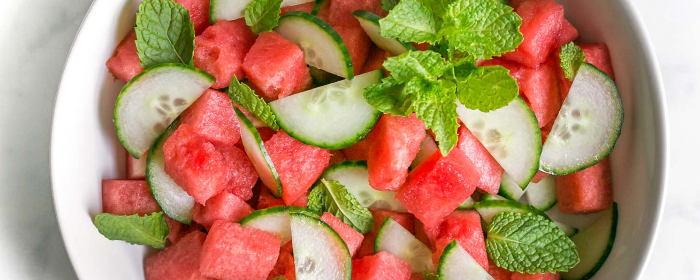
by admin | Sep 1, 2021 | Health Awareness
Gut bacteria have been a suspect in a number of brain disorders like Parkinson’s and autism since at least the mid-2000s. While more research continues to be done on this topic, gut microbes continue to be a prime suspect for some impacts on human health.
While research has focused mostly on how gut bacteria affects adults — including its impact on mental health — a new study suggests that gut microbes may be a potential factor in the risk of brain damage for premature babies.
Researchers at the University of Vienna discovered that premature babies with an overgrowth of the Klebsiella bacteria in their gastrointestinal tract were at higher risk for developing neurological problems at birth.
Because premature babies have not had enough time to complete the development process in utero, they run a much higher risk of having unbalanced gut bacteria. Because of this, certain microbes may proliferate while others, which would typically counterbalance the other entities, are crowded out.
Because researchers usually found these overgrowths in the gastrointestinal tracts of premature babies before observing neurological disorders, it may indicate that there is time to treat this imbalance of gut bacteria before it can impact the baby’s brain and nervous system.
While this study was focused specifically on how gut bacteria affected the brains of premature babies, it adds yet another example of ways that gut microbes might have an impact on human bodies as a whole.
There are several tests currently available that will let you test your gut bacteria at home, allowing you to identify any imbalances you might be experiencing. Combined with probiotic therapy, it may be possible to not only relieve many gastrointestinal symptoms but also to resolve or better control problems in other areas of your body as well.

by admin | Aug 26, 2021 | Health Awareness
As one of the most debated foods on the market, some dieticians and physicians believe that milk is meant only for baby cows and that cheese has the same limited nutritional merit. Others tout its calcium, protein, and vitamin D, concluding that it is part of a healthy diet.
When it comes to dairy, is it truly healthy food, or is it more of a health risk?
Arguments Against Dairy
Humans are placental mammals. Mothers produce milk to nourish a baby. Dairy detractors note that across the mammalian species when babies mature and begin to eat solid food, they do not go back to drinking milk.
Other concerns that dairy opponents have posed are that the amount of saturated fat in many dairy products is high and that other foods are rich in calcium with fewer drawbacks to their use.
Arguments for Dairy
Over 40 percent of Americans do not meet their recommended daily intake for calcium and Vitamin D. A major reason for this is that many people do not consume an adequate amount of dark, leafy greens. Many other non-dairy foods that are high in calcium are not a major part of the American diet, such as sardines and soybeans.
Most people enjoy the taste of at least some types of dairy, however, and it is often used as a garnish on and in many dishes. When it is used appropriately, it can serve as an effective source of calcium and Vitamin D.
Is There a Final Verdict?
Whether the harm is done to your body by your dairy intake will depend largely on two factors: The amount you consume and the source of your dairy.
If you do choose to enjoy dairy products in your diet, there are a few things that you can do to maximize their nutritional value. When possible, pick the dairy product that is lower in sugar. For instance, opt for plain yogurt rather than flavored forms. By eating things in moderation, you can minimize the impact of dairy on your health.

by admin | Aug 18, 2021 | Health Awareness
Most people have heard the term “antioxidants.” They often associate the term with healthy nutrition and good diets.
Still, many individuals do not understand what antioxidants are or the specific health benefits that they can offer. Below, we will discuss some of the most important information surrounding the health benefits of antioxidants.
Understanding Antioxidants
Antioxidants are a type of molecule. These molecules combat free radicals inside of your body. A “free radical” is a compound with the potential to harm your health. Free radicals perform crucial biological functions.
If the levels of free radicals in your body are too high, however, you will be at greater risk for many types of diseases. Some examples include:
- Diabetes
- Cancer
- Heart disease
- And more
The human body naturally produces some antioxidants to prevent excessive levels of free radicals. However, you can also increase the antioxidants in your body by eating certain foods. The foods and beverages with the highest antioxidant levels are vegetables, fruits, and plant-based unprocessed foods.
You can also increase your antioxidant levels with vitamin supplements. Vitamins C and E are particularly rich in antioxidants.
Ensuring an Antioxidant-Rich Diet
The most prevalent source of antioxidants in the American diet is coffee. This says more about the average U.S. diet than it does about antioxidant levels in coffee!
Most people in the U.S. do not eat enough antioxidant-rich foods. Plants contain antioxidants when they are alive to maintain their health. A diet full of plant-based whole foods is rich in antioxidants.
Fish and meats contain fewer antioxidants than plant-based foods. Antioxidants are also sometimes added to foods as a type of preservative. Some of the most common foods known for containing high levels of antioxidants include:
- Green tea
- Coffee
- Fresh berries
- Dark chocolate
- Kale
- Pecans
Antioxidant intake through fresh fruits and vegetables is key for maintaining good health and wellness. These molecules are crucial for reducing the risk of diseases. Enjoying a delicious and antioxidant-rich, plant-based diet will encourage your body to remain vibrant and healthy.

by admin | Aug 11, 2021 | Health Awareness
No matter what your age may be, taking control of your health is important. Developing good habits is crucial, especially as you get older.
Below, we will discuss seven important tips for men’s health and wellness.
1. Regular Check-Ups
The best type of medical care is preventative care. It is important to have a health and wellness check-up annually.
You should schedule a check-up each year, even if you do not have specific health concerns. A yearly physical will help to prevent any problems and catch issues early on.
As a part of their annual appointment, men should have blood pressure, cholesterol, and glucose evaluations measured as well.
2. See a Doctor About Any Concerning Symptoms
When you do have health concerns, see your doctor. This may include:
Invest in your good health by addressing any symptoms before they worsen.
3. Understand Family History
Your family health history can influence your health outcomes. Learn which conditions have appeared in your family and make sure to notify your doctor about your family health history.
4. Regular Exercise
You should set a goal of 30 minutes of exercise each day. While busy schedules make this difficult for many men, any exercise is better than none.
Regular physical activity is one of the cornerstones of men’s health.
5. Take Breaks
Stress can be very detrimental to a person’s health outcomes. Take regular breaks during your workday to keep stress under control.
Find creative ways to de-stress. Take days off to relax and find hobbies that you enjoy. This will help you to avoid any negative health outcomes.
6. Seek Cancer Screenings
As men age, regular cancer screenings become more important. Your doctor will likely recommend screenings for:
- Colon cancer
- Prostate cancer
- Lung cancer
- And more
Do not wait. Seek these screenings as part of your regular health maintenance.
7. Quit Smoking
Smoking is one of the most hazardous habits for men’s health. Speak with your physician about choosing a “quit date.” There are many online guides to help you stop smoking. Pick a quitting plan and stick to it.

by admin | Aug 4, 2021 | Health Awareness
If you find yourself snacking between meals, the problem might be dehydration. Many times, when you think you’re hungry, you may be actually thirsty—and eating salty snack foods like potato chips only makes the problem worse!
While the dangers of dehydration can sometimes be overstated, it never hurts to add more water to your diet. Here are 8 foods you can eat that will provide you with plenty of extra water.
1) Watermelon
As the name suggests, this delicious treat is mostly water. It also packs a lot of flavor for just a few calories. Try ending your exercise sessions with a slice of watermelon as a reward.
2) Cucumbers
In addition to salads, you can make cucumber sandwiches or soup. You can even cut them into slices and use them in place of chips, dipping them into yogurt or hummus.
3) Celery
Celery provides a low-calorie snack that’s packed with water. When you’re looking for a nice, refreshing crunch in your snack, celery is the answer—and it goes great with peanut butter!
4) Strawberries
Strawberries combine high water content with a powerful punch of flavor and a big boost of vitamin C. Try adding them to salads or dipping them in yogurt.
5) Tomatoes
Tomatoes have plenty of vitamins and minerals. They also have the high water content you need to stay hydrated.
6) Iceberg Lettuce
This leafy green is almost all water, which means that salads are a delicious way to get your daily nutrients while staying hydrated.
7) Cantaloupe
Melons can help you to start your morning hydrated. Cantaloupe provides you with plenty of water, along with a big serving of potassium.
8) Bell Peppers
Available in a range of colors, each with its own distinct taste, bell peppers are a nutritious treat. And with their high water content, bell peppers can help you fight dehydration!

by admin | Jul 22, 2021 | Health Awareness
Over the last decade, a significant amount of research has focused on the potential link between brain disorders and gut microbes. There is significant evidence that the gut microbiome plays a key role in identifying risk factors for several disorders, including:
However, interpreting this data can be challenging. This is because gut microbes are influenced by things such as exercise and diet. Additional research is still required, but the correlative relationship between brain disorders and gut microbes cannot be ignored.
Are Brain Disorders Caused by Gut Microbes?
Several trailblazers in the field have proposed that issues within the gut microbiome can trigger a variety of brain disorders. They have also hypothesized that gut microbes can influence the severity of these conditions. These presumptions are based on several animal-based studies. No meaningful human trials have been conducted at this point.
While no trials have been completed as of yet, scientists have gathered empirical data from patients suffering from certain neurodegenerative conditions. Their findings support the presumption that gut microbes can cause or worsen various brain disorders. They established a link between the presence of certain microbes and an increased risk of developing conditions such as ALS.
Can Brain Disorders Be Treated by Altering the Gut Microbe?
Unfortunately, research into the connection between the gut microbe and brain disorders has not given way to any new treatment options as of yet. Due to the nature of medical science, it will likely be several years before this data is translated into meaningful solutions.
Patients may explore to have a comprehensive evaluation on their overall and gut health with tests that can be done at home and sent to be evaluated. Learn your personal blueprint today with Genova Diagnostic testing available.
Others are discovering new neurodegeneration therapy opportunities that have arisen in recent years. The most notable of these is regenerative medicine, also known as stem cell therapy. This alternative option is available for access and initial research has resulted in showing potential outcomes in both symptom management and slowing condition progression.







 St. Petersburg, Florida
St. Petersburg, Florida
